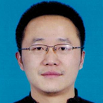“記念錯過的DUET_T”: Negotiating translanguaging practices in the legitimate graffiti of a multilingual schoolscape in Hong Kong
Abstract
Hong Kong’s higher education institutions, with their unique socio-political context and global reputation, have presented multiple and diverse schoolscapes where multilingual students can collectively construct a shared repertoire to perform their desired identities and create specific meanings. Recognizing the semi-public whiteboards on a Hong Kong University library wall as a genre of schoolscape, this paper aims to explore the intricate ways in which students negotiate their varied linguistic and semiotic resources to create and engage with multilingual graffiti that is deemed legitimate on these whiteboards. Drawing upon the concept of translanguaging (W. Li, 2011, 2018), we employed a sociolinguistic ethnographic design and collected 151 photographs of graffiti. Through a semiotic and ethnography-informed analysis of the linguistic landscape data, we argue that these graffiti signs encourage students to establish the schoolscape as a collaborative translanguaging space by enabling them to collectively participate in translingual and transmodal practices for fun. The graffiti signs also invite students to perform translanguaging practices to substantiate their sense of affiliation with the institution and its people in the translanguaging space where their affective experiences can be constructed and shared. The study concludes by advocating for further ethnographic investigations to enhance our understanding of translingual practices within multilingual schoolscape environments.
References
Amara MH (2018). Palestinian schoolscapes in Israel. Asian-Pacific Journal of Second and Foreign Language Education 3(1): 1–18. doi: 10.1186/s40862-018-0047-1
Ben-Rafael E, Shohamy E, Barni M (2010). Introduction: An approach to an ‘ordered disorder’. In: Linguistic Landscape in the City. Multilingual Matters. pp. xi–xxviii.
Brown KD (2012). The linguistic landscape of educational spaces: Language revitalization and schools in southeastern Estonia. In: Gorter D, Marten HF, Mensel LV (editors). Minority Languages in the Linguistic Landscape. Palgrave Macmillan UK. pp. 281–298.
Cassar J (2007). Unveiling desires: Adolescents’ hidden graffiti about sexualities and romantic relationships in schooled settings. International Journal of the Humanities 5(4): 179–184. doi: 10.18848/1447-9508/CGP/v05i04/42096
Cenoz J, Gorter D (2015). Multilingual Education: Between Language Learning and Translanguage. Cambridge University Press.
Cormier G (2020). Translanguaging and linguistic landscapes: A study of Manitoban schoolscapes. OLBI Working Papers 10: 87–105. doi: 10.18192/olbiwp.v10i0.3236
Dombrowski Q (2011). Walls that talk: Thematic variation in university library graffiti. Journal of the Chicago Colloquium on Digital Humanities and Computer Science 1(3): 1–13. doi: 10.6082/afsx-q540
Dressler R (2015). Signgeist: Promoting bilingualism through the linguistic landscape of school signage. International Journal of Multilingualism 12(1): 128–145. doi: 10.1080/14790718.2014.912282
García O (2009). Bilingual Education in the 21st Century: A Global Perspective. Wiley-Blackwell Pub.
Gibbons J (1979). Code-mixing and Koinéising in the speech of students at the University of Hong Kong. Anthropological Linguistics 21(3): 113–123.
Gibbons J (1987). Code-mixing and Code Choice: A Hong Kong Case Study (Multilingual Matters #27). Multilingual Matters.
Gorter D, Cenoz J (2015). Translanguaging and linguistic landscapes. Linguistic Landscape 1(1–2): 54–74. doi: 10.1075/ll.1.1-2.04gor
Gu MM, Tong HK (2012). Space, scale and languages: Identity construction of cross-boundary students in a multilingual university in Hong Kong. Language and Education 26(6): 501–515. doi: 10.1080/09500782.2012.663553
Jocuns A (2021). The geosemiotics of a Thai university: The narratives embedded in schoolscapes. Linguistics and Education 61: 100902. doi: 10.1016/j.linged.2021.100902
Li DCS (2000). Cantonese-English code-switching research in Hong Kong: A Y2K review. World Englishes 19(3): 305–322. doi: 10.1111/1467-971X.00181
Li DCS (2017). Multilingual Hong Kong: Languages, Literacies and Identities. Springer Cham.
Li DCS, Elly CY (2002). One day in the life of a “purist”. International Journal of Bilingualism 6(2): 147–203. doi: 10.1177/1367006902006002030
Li DCS, Wong CSP, Leung WM, Wong STS (2016). Facilitation of transference: The case of monosyllabic salience in Hong Kong Cantonese. Linguistics 54(1): 1–58. doi: 10.1515/ling-2015-0037
Li W (2011). Moment analysis and translanguaging space: Discursive construction of identities by multilingual Chinese youth in Britain. Journal of Pragmatics 43(5): 1222–1235. doi: 10.1016/j.pragma.2010.07.035
Li W (2018). Translanguaging as a practical theory of language. Applied Linguistics 39(1): 9–30. doi: 10.1093/applin/amx039
Liu G (2023). Review of Johnson (2021): Linguistic landscaping and the pacific region: colonization, indigenous identities, and critical discourse theory. Linguistic Landscape 9(1): 107–109. doi: 10.1075/ll.00030.liu
Liu G, Ma C (2023). English in a rural linguistic landscape of globalizing China: Language commodification and indigenous resistance. English Today 1–8. doi: 10.1017/S0266078423000135
Luke KK (1998). Why two languages might be better than one: Motivations of language mixing in Hong Kong. In: Pennington MC (editor). Language in Hong Kong at Century’s End. Hong Kong University Press. pp. 145–159.
Niedt G, Seals CA (2020). Linguistic Landscapes Beyond the Language Classroom. Bloomsbury Publishing.
Pennycook A (2017). Translanguaging and semiotic assemblages. International Journal of Multilingualism 14(3): 269–282. doi: 10.1080/14790718.2017.1315810
Ritchie WC, Bhatia T (2013). 13 social and psychological factors in language mixing. In: Bhatia TK, Ritchie WC (editors). The Handbook of Bilingualism and Multilingualism. Wiley-Blackwell. pp. 375–390.
Shang G, Zhou X (2020). Peripheral linguistic landscape: Sign types, features and research perspectives (Chinese). Chinese Journal of Language Policy and Planning 5(4): 37–47.
Williams C (1996). Secondary education: Teaching in the bilingual situation. In: Williams C, Lewis G, Baker C (editors). The Language Policy: Taking Stock. CAI. pp. 193–211.
Zhu H, Li W, Jankowicz-Pytel D (2020). Translanguaging and embodied teaching and learning: Lessons from a multilingual karate club in London. International Journal of Bilingual Education and Bilingualism 23(1): 65–80. doi: 10.1080/13670050.2019.1599811
Copyright (c) 2023 author(s)

This work is licensed under a Creative Commons Attribution 4.0 International License.
The author(s) warrant that permission to publish the article has not been previously assigned elsewhere.
Author(s) shall retain the copyright of their work and grant the Journal/Publisher right for the first publication with the work simultaneously licensed under:
OA - Creative Commons Attribution License (CC BY 4.0). This license allows for the copying, distribution and transmission of the work, provided the correct attribution of the original creator is stated. Adaptation and remixing are also permitted.
This broad license intends to facilitate free access to, as well as the unrestricted reuse of, original works of all types.









_%E5%89%AF%E6%9C%AC1.png)

